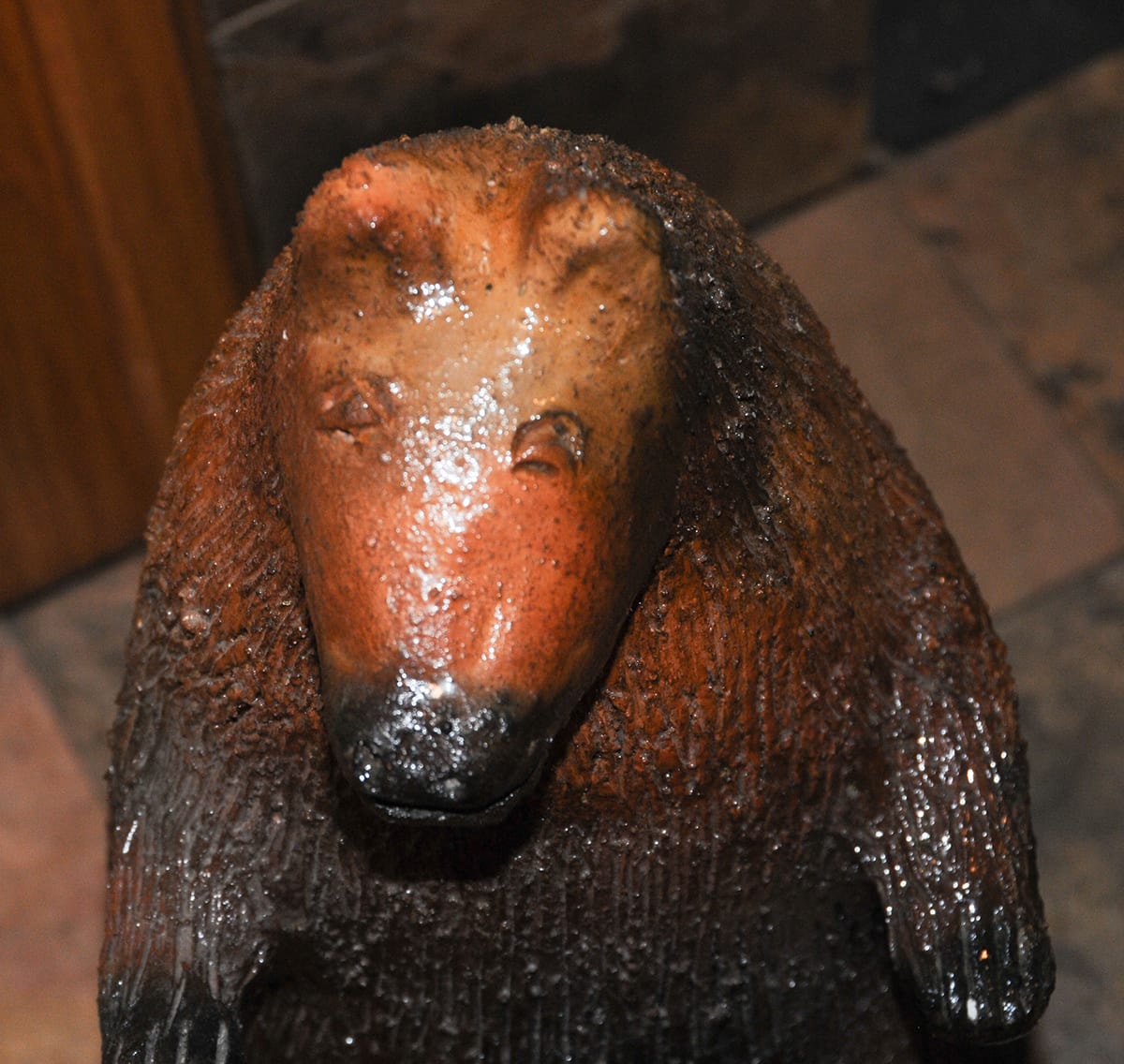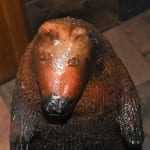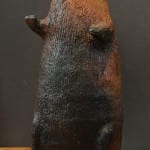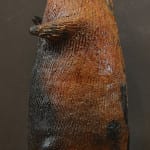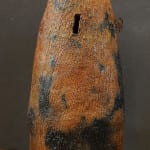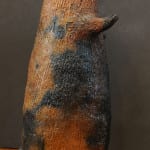Bill Beaver fell in love with Navajo pottery when working at Chaco Canyon in the 1940s and Shonto Trading post in the 1950s. In 1960, he bought Sacred Mountain Trading Post 20 miles north of Flagstaff on Route 89. There, he began to promote Navajo pottery to the commercial market. (The trading post has recently closed.) Born in 1937, Ms. Goodman found a market for her pottery through Sacred Mountain. In large part because of Bill Beaver, there has been a surge of creative Navajo folk art during the last three decades using many mediums (Rosenak 1994).
Among those Navajo folk artists working in clay, Louise Goodman is particularly well known for her banks in the form of bears (Hartman & Musial 1987:66-67). This is a typical (though especially large) example. The clay and firing marks are traditional, as is the pinion sap finish. It’s the shape that is innovative:
“…In the 1980’s (Goodman) started making large pot-bellied bears with stubby legs and small heads, sitting on their haunches. These hollow, folksy creatures (sometimes with a slot in back for use as a bank, sometimes not) sold like hotcakes. ‘If you want to get money out of them,’ she says with a smile, ‘you gotta shake them’” (Rosenak 1994:126 with bear photograph). Bear 2012-15 has a slot in its back, but I resist inserting money.

